Anyone who wanted could cite plentiful examples of exceptional women in the world today: it’s simply a matter of looking for them. — Christine de Pizan, The Book of the City of the Ladies, 1405
Images of women fill the galleries of the world: there are countless paintings and sculptures depicting them walking, talking, gazing, naked, clothed, eating, drinking, making love, and murdering. They’re mothers, maidens, crones, and temptresses; metaphors, allegories, symbols, saints, and sinners; passive, active, remote, and intimate. And yet, despite the fact that women have always made art, in the main, works by them are absent from the great galleries of the world. As the activist collective the Guerilla Girls asked in 1989: Do women have to be naked to get into the Met?
It’s an obvious point to make, but worth making nonetheless: the art made by women — of which there are centuries of records — is as varied as that made by men. Gender is not a straightforward category, and neither is art. Look at what women have created over the past few centuries and the idea of a singular feminine sensibility is rendered redundant. (A case in point: the great Baroque artist Artemisia Gentileschi’s versions of Judith and Holofernes are more violent than Caravaggio’s — and he was a convicted murderer.) And yet, although things have improved, women are still discriminated against at every level of the art world.
In September 2019, a joint investigation by In Other Words and artnet News cited a remarkable fact: although the market for the work of women artists has doubled over the past decade, the combined sales generated by around 6,000 female artists added up to less than the total sales of work by Pablo Picasso during the same period. [source] The authors of the article, Julia Halperin and Charlotte Burns, go on to examine, in forensic detail, the art world’s gender discrimination.
“The exclusion of woman from art history and the market is not a theory: it’s a fact”
Their conclusion — namely, that the market ‘overwhelmingly finds greater value in work produced by men than that made by women’ — should sadly come as no surprise. But the statistics do. Although I, for one, am all-too-aware of the failings of the art world, I hadn’t realized it was so extreme. Analysing data from international auctions, leading galleries, and Art Basel between 2008 and 2019, less than two percent of auction sales were attributed to the work of female artists. It gets worse: almost 41 percent of this number is distributed amongst five best-sellers: in descending order, Yayoi Kusama, Joan Mitchell, Louise Bourgeois, Georgia O’Keefe, and Agnes Martin. It’s worth spelling out that only one of these artists is still alive, and she’s 91.
How to account for the lack of market interest in the work of women artists? Is it because buyers believe that a female sensibility makes for a poorer investment? Or do they simply believe that the work is innately inferior and less deserving of attention? Are collectors lazy, ignorant, or prejudiced? Are the galleries themselves, with their shoddy record of representing women, to blame, or curators, for not showcasing the work of women? Whatever the reasons, considering the extraordinary range, power, and skill of so many female artists, the fact that they’re not receiving their dues is at best baffling, and at worst, enraging. Consider this statement by Allan Schwartzman, an art advisor and chairman of Sotheby’s Fine Art Division, who believes that feminism changed the language of art. “Before the women’s movement,” he says, postwar American art “couldn’t be psychologically vulnerable, personal, diaristic, fragile, tender, self-revealing, small, colourful, eccentric, handmade. Since then, much of the most valued contemporary art is many of these things.”
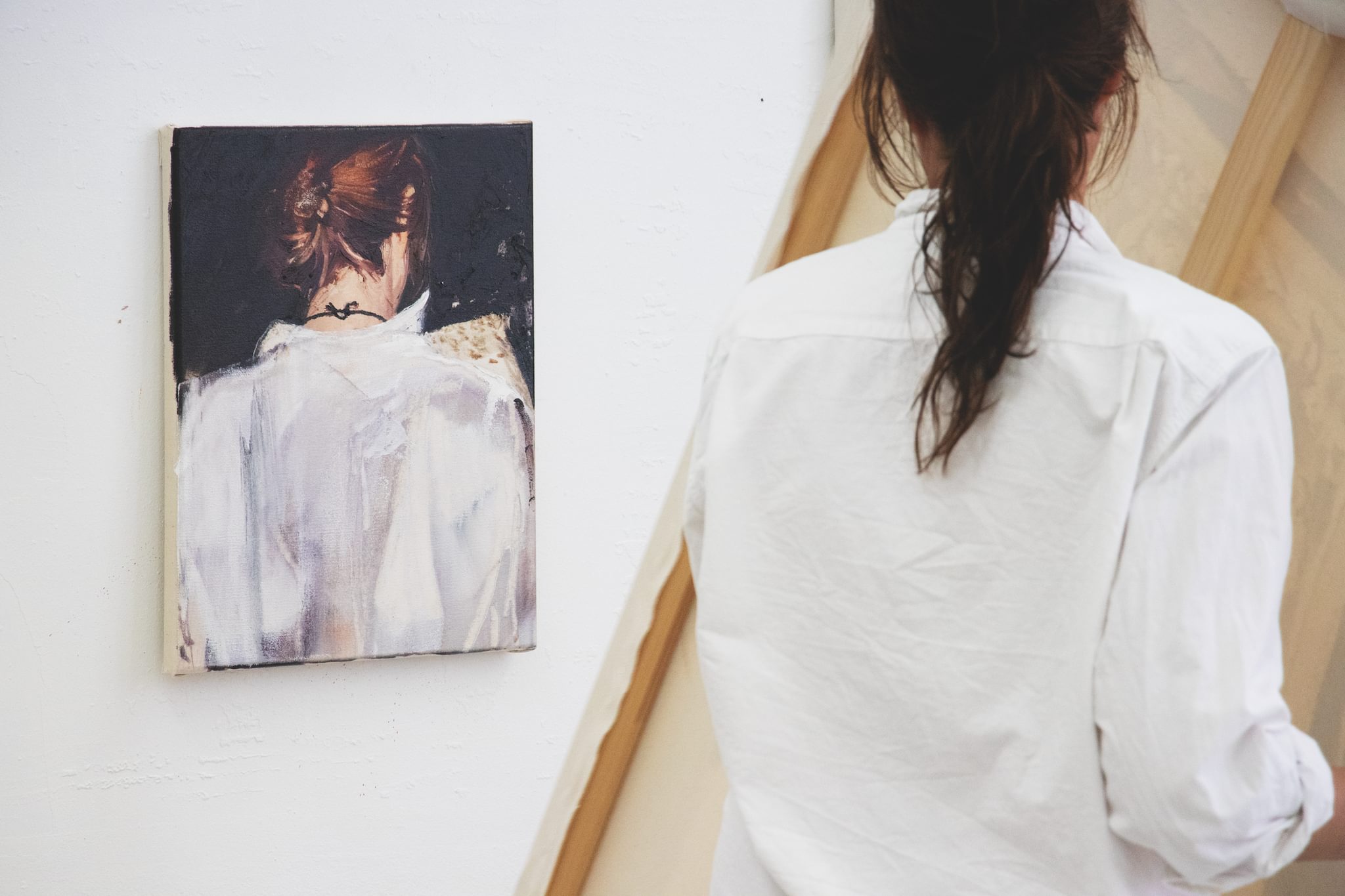
Swedish artist Sara-Vide Ericson (b. 1983) in her studio.
Private photo.
The historical precedent for these discrepancies is complex. Art is a reflection of the fact that each person’s experience of, and response to, this planet is unique. Yet, put bluntly, we live in a white patriarchy that has traditionally valued the achievements of white men over women or people of colour. (My focus here is gender: the entrenched racism of the art world, and its attitudes to class, deserves its own article.) Before feminist historians shook up complacent narratives, art historians rarely questioned whether forms of art-making that bloomed beyond their narrow remit might be worthy of serious scrutiny or discussion. Take, for example, two of the most popular art history textbooks of the 20th century: E.H. Gombrich’s Story of Art (1961) and W.H. Janson’s History of Art (1962). When their first editions were published not a single woman is mentioned: their myriad achievements had, quite simply, been erased from what was assumed to be an accurate account of art history.
Given that female artists have been written about, collected, and lauded for centuries, it’s a struggle to explain Gombrich and Janson’s sloppy scholarship. If their shocking omissions aren’t a sign of how threatened men, however unconsciously, have been — and in many cases continue to be — of women expressing something about the world and their place in it then what, exactly, was going on? Both Gombrich and Janson were, of course, historians: it was their responsibility to tell the truth — were they simply bad researchers? It’s hard to know, and of course, now they’re both dead, so we can’t ask them. Their scholarship, or lack of it, had terrible repercussions.
One example: last year, I interviewed Frances Morris, the Director of Tate Modern, and asked her about her time studying for her degrees at Cambridge University and The Courtauld Institute in the 1970s and ’80s. Had she, I asked, been taught about the achievements of women artists? She shook her head. The only female artist she could recall learning about was Anni Albers, as she had been the first woman granted a retrospective at the Museum of Modern Art in New York. It goes without saying that degrees from Cambridge and the Courtauld are considered to be among the most prestigious in the world. But, as the 19th-century art historian and critic Vernon Lee wrote: “There is no end to the deceits of the past.” But then, she was a woman. She knew of what she spoke.
The pre-20th-century woman who forged a career as an artist was formidable: her way was barred in countless ways — from apprenticeships, academies, life rooms, and guilds — but still, she persisted. She had little to no political agency and was expected to be a mother or a nun — yet, somehow, she managed to find the time and energy it takes to become a professional artist. This was the depressing situation for centuries. (Important to stress that I’m speaking about women in Western countries. Female creativity has long been revered in countless Indigenous communities around the world.) There are records of women artists in 16th century Holland, and 17th-century northern Italy and England, 18th-century France, and 19th century Germany.
The more you dig, the more is revealed. And yet, so many historians refused to acknowledge her, so many museums refused to collect her work, and so many collectors refused — and many still refuse — to financially support her. It’s baffling, considering how good so much of the work is. In the 20th and 21st centuries, while women in the West now, of course, have rights inscribed in law, their careers are often stalled by motherhood and childcare, and in most households, they still do the bulk of house-cleaning and domestic chores. ‘Best of’ lists and art prizes with age limits often discriminate against women artists who have taken time out to raise a family. Look at the careers of the most successful artists and a pattern emerges. In the UK, Phyllida Barlow and Rose Wylie only achieved a level of critical and commercial success in their 70s, when the demands of motherhood and earning a living had dropped away, while other women at the top of their game, such as Tomma Abts, Tracey Emin, Lubaina Himid, Sarah Lucas, Helen Marten, and Rebecca Warren, do not have children. This is surely not a coincidence.
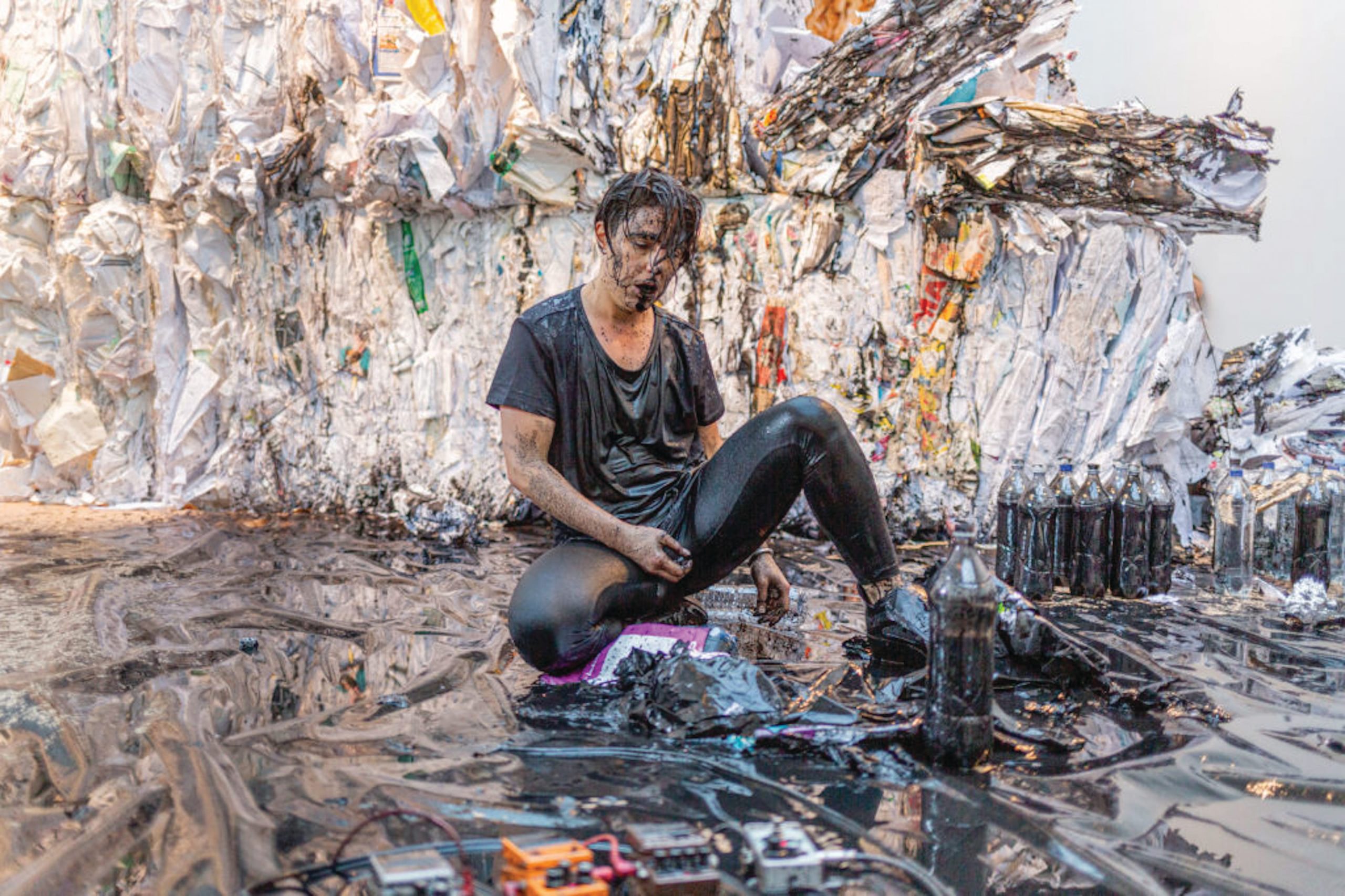
Anastasia Ax, The World as of Yesterday, performance, 2019.
Photo Hendrik Zeitler.
We are at a moment in history when women, in the West at least, have more power and equality than they have ever had before. More women than men are enrolled in art schools and the art world is somewhere you might assume would promote inclusivity and fairness. But going by the market, this is a woefully inaccurate assumption. If the art world has a get-out card — a lame one — it’s that it’s simply part of the world in general and perhaps (deep sigh) we need to be more patient for the world to treat everyone equally. But at this rate, our patience will be sorely tested – we’d have to be saints to put up with it. In ‘The Global Gender Gap Report 2018’ by the World Economic Forum, it was bluntly stated that, at the current rate of progress, it will take at least 108 years to achieve gender parity. [source]
The exclusion of women from art history and the market is not a theory: it’s a fact. There is no ambiguity in a survey of the permanent collections of 18 major art museums in the U.S: out of more than 10,000 artists, 87% are male, and 85% are white. [source] (For more eye-watering statistics, the National Museum of Women in the Arts in Washington has them in one handy list here.) [source]
Despite the explosion of female creativity in the 20th century, even now, there are blue-chip galleries that in the main, at best only represent a handful of women and at worst, exclusively represent artists who are white men. In Dr. Kate McMillan’s 2018 Freeland’s Foundation Report on the representation of women in the cultural sector in the UK, she declares that 32 percent of the artists represented by commercial galleries in London are women — which is a four percent increase from 2017. It’s perhaps curious, though, that if a gallery is run by a woman — as 48% of the London galleries are — it doesn’t seem to make much difference to the numbers. Across the board, the rule of thumb is 65% men, to 35% women. Out of 120 galleries, only 25 show 50% or more women artists, and some of the worst-performing galleries for gender balance are run by women. [source]
In the artnet article I mentioned earlier, the Los Angeles gallerist Susanne Vielmetter, who founded her business in the early 2000s, makes it clear how bad things have been. Talking about the early days of her business, she says: “You couldn’t tell a collector that you counted the number of female artists in museum shows or your gallery program. People would think you either had some kind of early childhood trauma — that there was something psychologically damaged about you — or that you were so hopelessly stuck in the 1990s identity-politics era that you simply couldn’t be helped. At least we are having the conversation now.”
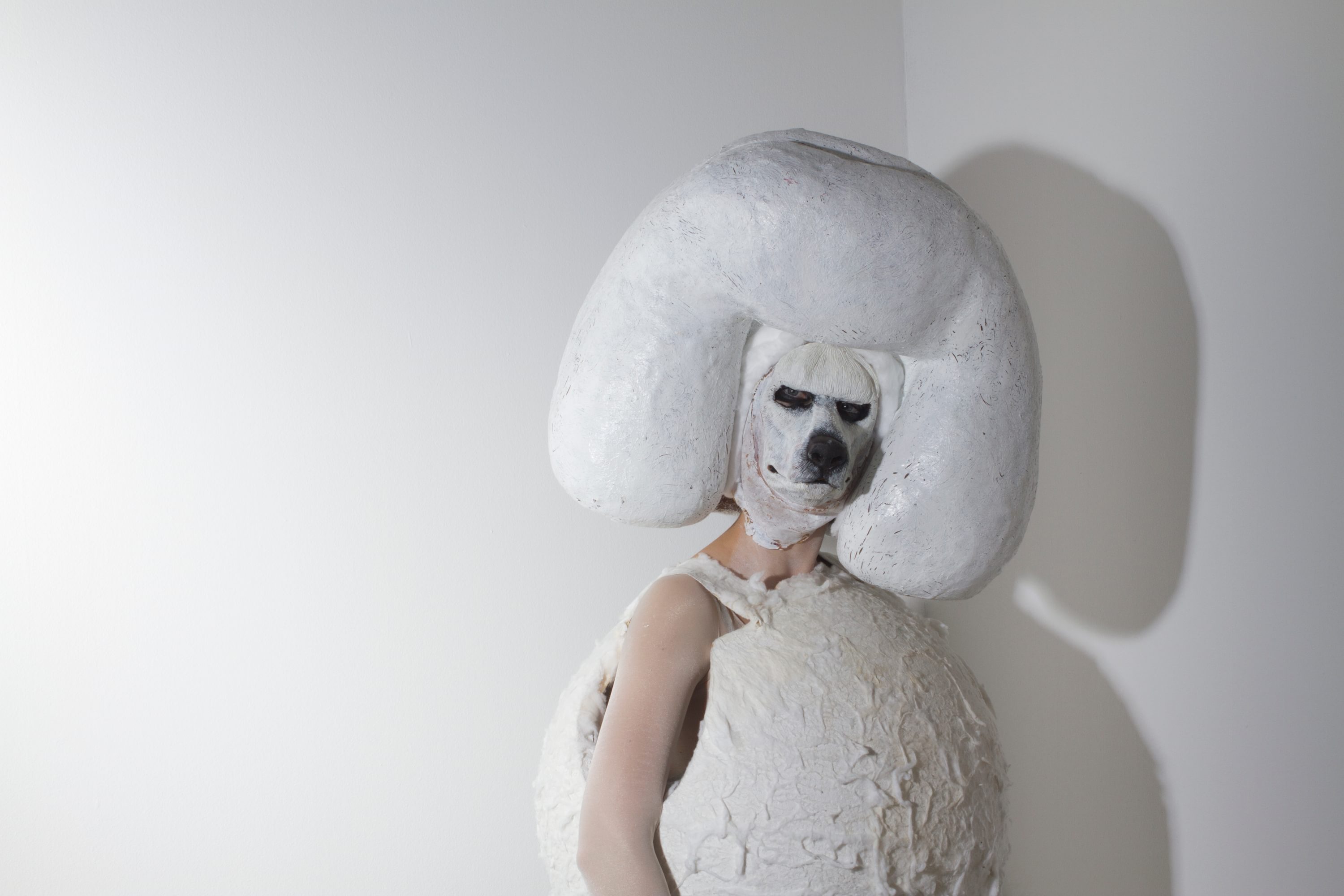
Nanna Abell, Continental Clip, 2012, latex, polyester, styropor, nylon, cotton.
Photo by Absalon Kirkeby. Courtesy of the artist and Galleri Susanne Ottesen.
Things are improving in the museum sector, many of which are prioritising acquisitions by historic female artists. A good example: in 2018, with great fanfare, the National Gallery in London bought the brilliant Baroque painter Artemisia Gentileschi’s Self- Portrait as Catherine of Alexandria (c.1615). It’s the first 17th-century Italian self-portrait by a woman in the gallery’s collection of around 2,300 works — of which only 24 are by women. In 2019, the gallery sent Artemisia’s self-portrait on a national tour to a series of unconventional venues: The Glasgow Women’s Library, a doctor’s surgery in East Yorkshire; a catholic girl’s school in Newcastle upon Tyne; a women’s prison, and a library in East London. In each venue, discussions, and workshops were held. The Guardian newspaper even dedicated an editorial to this radical re-thinking of the relevance of Baroque painting, concluding with the line: “Artemisia Gentileschi, nearly four centuries after her death, may have changed lives these past weeks.” [source] Across the river, the curatorial team at Tate Modern, which is headed by Frances Morris, has actively been working towards gender parity. When the new wing of the museum opened in 2016, it was the first time in any museum in the world that 50% of the work on show was by women artists. Another brilliant initiative is taking place later this year in Australia. The National Gallery in Canberra has launched Know My Name, a series of exhibitions, events, commissions, collaborations, publications, and partnerships that, in the gallery’s words “calls for equal power, equal respect, equal opportunity, and equal representation for women artists.” They “acknowledge that only 25% of works in the Australian art collection are by women artists and we want that to change. It is time we valued women artists equally. We believe it is the role of the National Gallery to elevate the women who have been instrumental in shaping and inspiring Australian culture for more than 60,000 years.” [source]
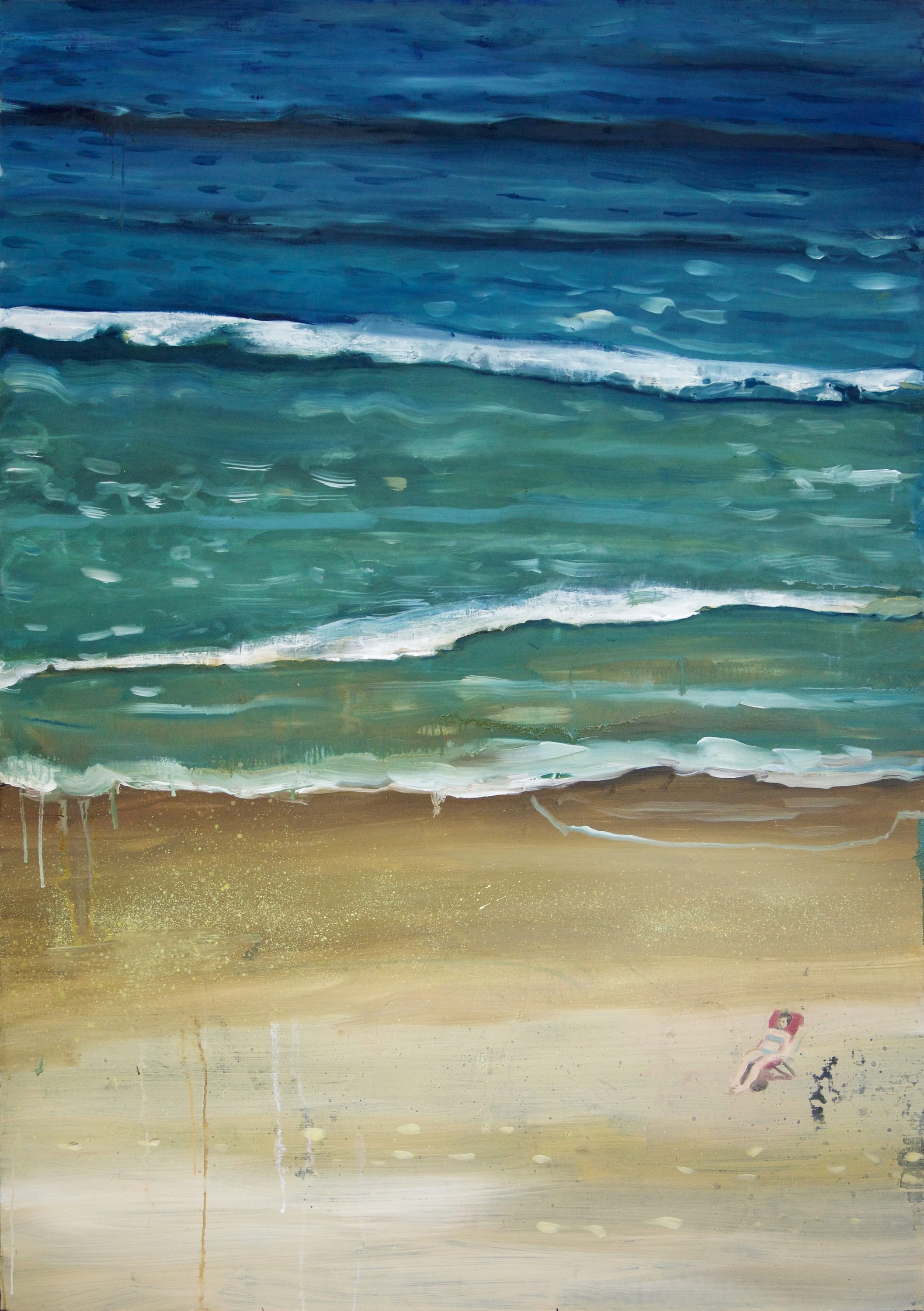
Anna Bjerger, Ocean, 2020, Oil on aluminium, 128 x 90cm.
Photo by James Aldridge.
While these initiatives are to be applauded, more needs to happen. So, what to do? Are quotas the answer? I think, in terms of public commissions and museum acquisitions, absolutely. But it would be impossible to insist that an equal number of work by women and men are sold at auction: this has to happen organically, through education and advocacy. It’s clear that commercial galleries have a vital role to play in the recognition and promotion of female creativity. They also need to convince collectors that, quite apart from the ethics of being anti-discriminatory, it makes commercial sense to invest in the work of so many ground-breaking and undervalued women, as they represent an overlooked section of a market that is finally getting some attention.
The endpoint of all of this is simple: if women’s creativity isn’t championed, it disappears. If women artists can’t survive financially, then they’re forced to make money elsewhere, which means they have no time to make their art. If the story of art is to be one that actually tells the story of what really happened, then museums have to acquire work by historic women artists. Museums and collectors buy from galleries; they can’t enrich their collections if the work quite simply isn’t for sale. To promote the work of women simply means promoting the idea that art is a true reflection of the world, in all of its messy complexity. Who could possibly argue with that?
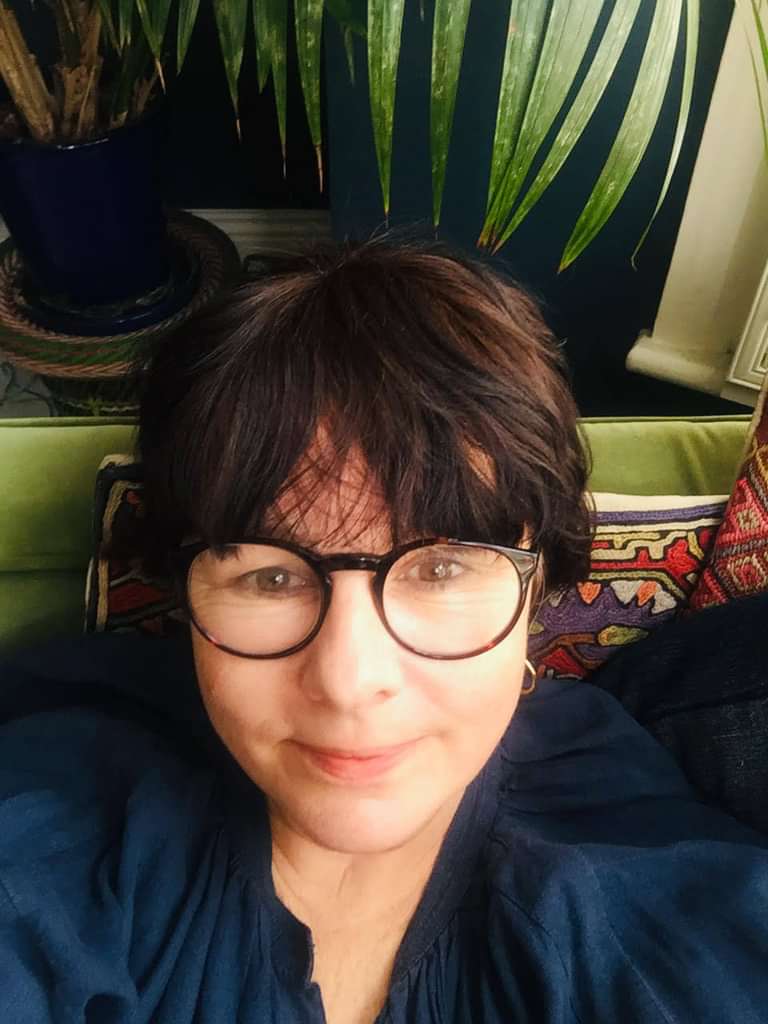
Jennifer Higgie is frieze Editor-at-Large and the presenter of the Bow Down podcast. She is the editor of The Artist’s Joke and author of the novel Bedlam. Her new book The Mirror & The Palette, on historic women’s portraits, will be published in 2021. She is on the judging panel of the John Moore’s Painting Prize 2020.
Private photo.



